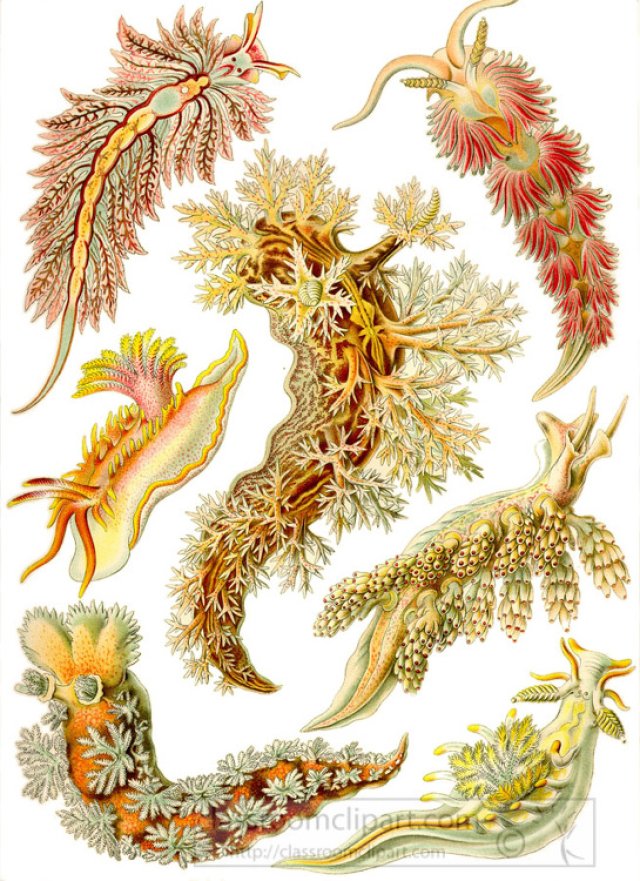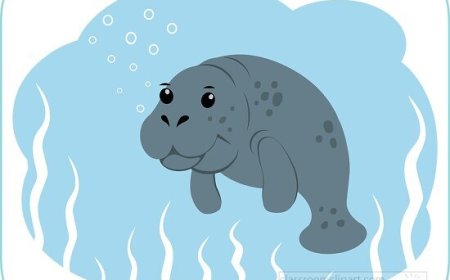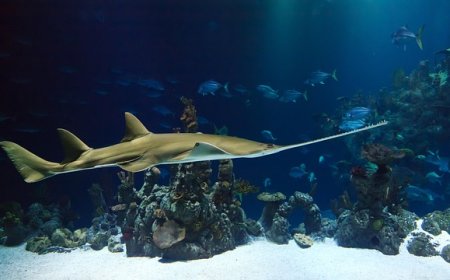Nudibranch Facts for Kids: Colorful Sea Slugs with Amazing Defenses
Learn all about nudibranchs for kids. Discover these colorful sea slugs, how they protect themselves, where they live, and fun ocean facts.

🐌 Nudibranchs: Colorful Sea Slugs with Amazing Defenses
Nudibranchs (say “NEW-dih-branks”) are some of the brightest and most bizarre-looking animals in the ocean. These soft-bodied, shell-less sea slugs come in thousands of colors and shapes, each with special tricks for staying safe in the sea.
Even though they’re small—usually just a few inches long—nudibranchs are tough and tricky survivors. They live all over the world and play important roles in the ocean’s food chain and ecosystem.
🌍 Habitat and Distribution
Nudibranchs live in oceans all over the world, from shallow tide pools to the deep sea. They are most commonly found:
- Along coral reefs
- On rocky shores
- In seagrass meadows
- On sponges, corals, and seaweed
Some prefer warm, tropical waters, while others live in cold Arctic seas. Most stay on the seafloor, crawling slowly in search of food.
🧬 What Is a Nudibranch?
A nudibranch is a type of gastropod, a group that includes snails and slugs. Unlike most sea snails, nudibranchs don’t have a shell as adults.
Key features:
- Soft, flexible body
- Colorful patterns for warning or camouflage
- Rhinophores – horn-like sensory organs for smelling
- Gills on their back for breathing
- Foot – a flat surface underneath for crawling
“Nudibranch” means “naked gills,” because their gills are exposed instead of hidden.
🍴 Diet and Feeding Behavior
Nudibranchs are carnivores. Their favorite foods include:
- Sponges
- Corals and anemones
- Hydroids and bryozoans
- Other sea slugs and eggs
Some nudibranchs have incredible abilities:
- They can steal stinging cells from jellyfish and store them in their own skin for defense.
- Others eat algae and store the algae’s chloroplasts to use sunlight for energy!
They use a radula—a toothed tongue—to scrape or suck food from surfaces.
🎨 Color, Camouflage, and Defense
Nudibranchs are famous for their brilliant colors—neon blue, bright orange, hot pink, and more. These wild looks help them survive.
Defense strategies:
- Aposematic coloration – Bright warning colors signal “I’m toxic!”
- Camouflage – Some blend in perfectly with coral or seaweed.
- Stolen stingers – They keep stinging cells from jellyfish to protect themselves.
- Slimy chemicals – Others release nasty-tasting mucus to stay safe.
🐣 Reproduction and Life Cycle
Nudibranchs are hermaphrodites, meaning each individual has both male and female organs. When two nudibranchs meet:
- They exchange sperm.
- Each lays a ribbon of eggs afterward.
The eggs hatch into tiny larvae that float in the ocean before settling down and becoming crawling adults. Lifespans vary from a few weeks to a year.
⚠️ Threats and Conservation
While nudibranchs aren’t endangered as a group, they face:
- Habitat destruction (especially to coral reefs)
- Pollution from oil, plastics, and chemicals
- Climate change, which alters water temperature and food sources
- Ocean acidification, harming their prey like coral and sponges
Scientists study nudibranchs as indicators of ocean health.
Conservation efforts include protected marine areas, pollution reduction, and reef restoration.
🎉 Fun Facts About Nudibranchs
- Some glow in the dark (bioluminescence).
- There are over 3,000 known species, with new ones found every year.
- They range from smaller than a fingernail to longer than a pencil.
- Many are called the “butterflies of the sea.”
🧠 Vocabulary List
- Nudibranch – A soft-bodied sea slug with exposed gills.
- Gastropod – A group of animals including snails and slugs.
- Rhinophores – Sensory organs used to detect smells underwater.
- Aposematic coloration – Bright warning colors signaling danger.
- Radula – A toothed tongue for feeding.
- Hermaphrodite – An organism with both male and female reproductive parts.
- Camouflage – Blending in with surroundings.
- Bioindicator – A species that signals ecosystem health.
- Ocean acidification – When seawater becomes more acidic from CO₂ uptake.
✅ Nudibranch Quiz: Who Knew Sea Slugs Were So Cool?
- What does “nudibranch” mean?
A. Soft slug B. Colorful shell C. Naked gills D. Tiny tentacles
Answer: C. Naked gills - What do nudibranchs eat?
A. Coral and jellyfish B. Sand C. Seaweed only D. Air
Answer: A. Coral and jellyfish - What are rhinophores used for?
A. Swimming B. Smelling C. Eating D. Glowing
Answer: B. Smelling - How do nudibranchs defend themselves?
A. Grow a shell B. Shoot ink C. Camouflage, poison, or stolen stingers D. Hide in caves
Answer: C. Camouflage, poison, or stolen stingers - Why are nudibranchs important to scientists?
A. Good pets B. Always glow C. Indicate ocean health D. Eat trash
Answer: C. Indicate ocean health
🧒 Kid-Friendly Summary
Nudibranchs are brightly colored sea slugs found in oceans worldwide. They may look cute, but many have stingers, poison, or camouflage to stay safe. Some even glow or steal defenses from their prey!
They help keep coral reefs clean and show scientists how healthy the ocean is. Even though they’re small, nudibranchs are some of the coolest creatures in the sea!



















































